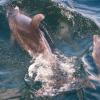Lucayan National Park
Lucayan National Park, designated as a National Park at the national level in 1977, spans 7.85 km2 and is a crucial conservation area in the Bahamas. The park showcases all Bahamian vegetative zones through preserving one of the world's longest charted underwater cave systems, remains of the Lucayan Indians, and diverse natural environments, including pine forests, mangroves, coral reefs, and the renowned Gold Rock Beach. Established in 1982 and expanded in 2015, Lucayan National Park significantly contributes to the economy of Grand Bahama, supporting the livelihoods of many Bahamians and ranking as the second most visited national park in The Bahamas.
Beyond its economic impact, Lucayan National Park plays a vital role in biodiversity conservation. The park houses two caves that protect ancient remains and harbor unique species of cave dwellers. Notably, the discovery of the blind Remipedes, a new species and class of crustacean, in Ben's cave highlighted the park's scientific importance. Additionally, the park encompasses a portion of Gold Rock Creek, the last intact mangrove tidal creek on the southern shores of Grand Bahama. This area sustains a thriving mangrove ecosystem, offering opportunities for observing saltwater fishes, wading birds, and waterfowl from the boardwalk.
Source: Bahamas National Trust




